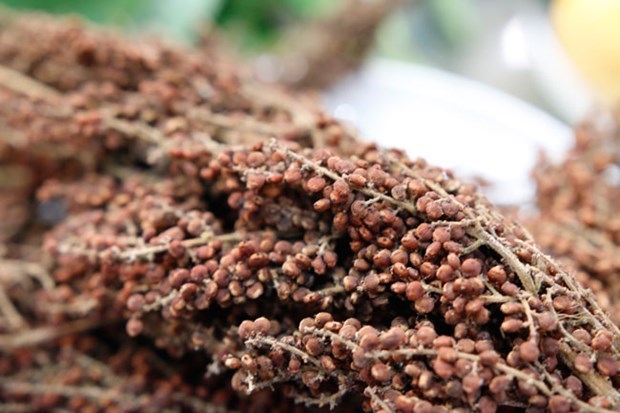Nutgall trees (Rhus Chinensis) particularly grow in Chu Moray Reserve Area. Nutgall fruits are the main spice to season buff in important celebrations or religious activities of Highland people, such as weddings, celebrating new crops or new houses.
“After
Lunar new year is the best time in the forest. Buds are emerging on branches.
Forests are lush and wet. The nature is formal yet passionate. That is partly
due to spring rains.
Tu
Huyen flowers bloom every 30 years. Whoever sees those flowers will get good
lucks. This flower is white, salty, and small as a dot so that people call it
“salt of forests”. When salt of forests crystallize is a signal of peaceful
period and abundant harvests…” - quoted from “Salt of Forest” short story of
Nguyen Huy Thiep.
Above
are rare bright paragraphs in the tragedy story. However, our salt of forests
rather has a happy ending. Different from Tu Huyen flower of the north, this
salt of forests is a spicy fruit, which was discovered by the minorities in
Middle Highlands.
The
salt of forests is scientifically named Rhus semialata Murray. Even thought it
has been embellished by beautiful names, local people here have used this salt
fruits naturally as “gifts from the forests” for years since sea salt had no
way to reach those far-far-away villages.

Nutgall fruits. Photo by: Trung Dzung
Nutgall
fruits were introduced to The Golden Spoon Contest 2016 by 79 Gia Bao
Restaurant (Kon Tum province) through the dish of spiny eels (chach gai fish)
in nutgall sauce and served with 5 kinds of spice leaves. Spiny eels live in
harsh environment, among rocks and strong flows of Se San river so that their
muscles get so firm in adaption.
Spiny
eel was cleaned off fishy slim in green tea, then filleted and seasoned with
chopped wild Lot leaves and salt seeds in 15 minutes. A piece of spiny eel
fillet was well chopped together with a little of pork, rolled in wild Lot
leaves while another piece was cut into bites, then steamed and served with 5
kinds of leaves, including wild makok, Dung with acrid taste, wild fig, red
muskdana (Vong Vang) with sour taste, and wild Nganh Nganh.
Nutgall
trees particularly grow in Chu Moray Reserve Area. Nutgall fruits are the main
spice to season buff in important celebrations or religious activities of
Highland people, such as weddings, celebrating new crops or new houses. Nutgall
is a woody plant species in the genus Rush, can be 2 – 8 meter high with
clusters of white flowers on top of branches.
Nutgall
fruits are only available in spring so they have to stock. The fruit is a green
bean size, salty with a hint of sour, turning brown after time. A pinch of salt
seeds, spicy pepper, lime, and 5 kinds of leaves were grinded to make sauces
for spiny eel dish.

Spiny eel in salt seed sauce, served with 5 kinds of leaves. Photo by: Trung Dzung
Chef
Duc Hoang said, “This salt fruits are really odd, only available in spring so
we had to stock them from Tet till now.” We double-checked this with Mr. Vang
A, who loves to explore Northern Highlands’ cuisine. Mr. Vang A told his story
about how he met this mysterious fruits on Chen pass (Son La province) years
ago. They have all special features as the salt fruits in Middle Highlands but
time of fructification in the north is around end of summer.
Thai
minority people collect these fruits and sell on side road at 120000vnd per
kilo (about US $5.5). They also use them as a gifted spice: sun dry, mill and
mix them with other regional spices. Mr. Vang A shared his experiences, “Boil
pork and salt fruits together make unstoppable dish.”
Salt
of forests played a big role to help chefs from Kon Tum province fulfill the
story of spices with a happy ending: 1st prize of The Golden Spoon Preliminary
2016 and 40,000,000vnd as award.
By Nguyen Trang/Nguoi do thi